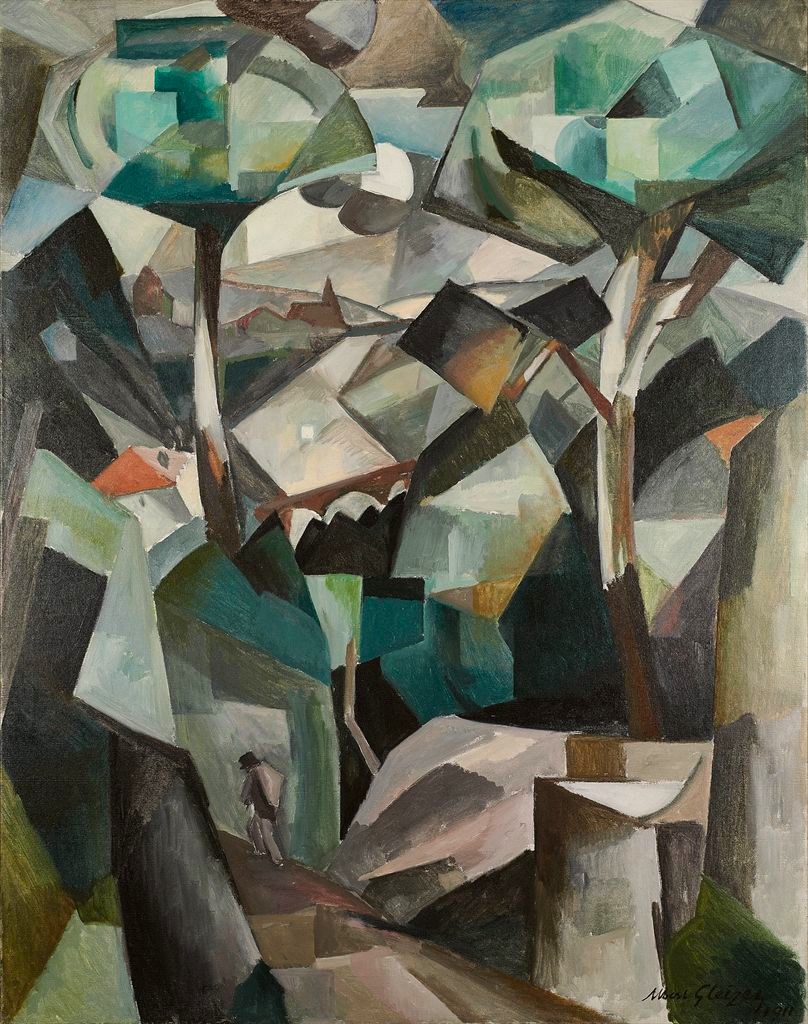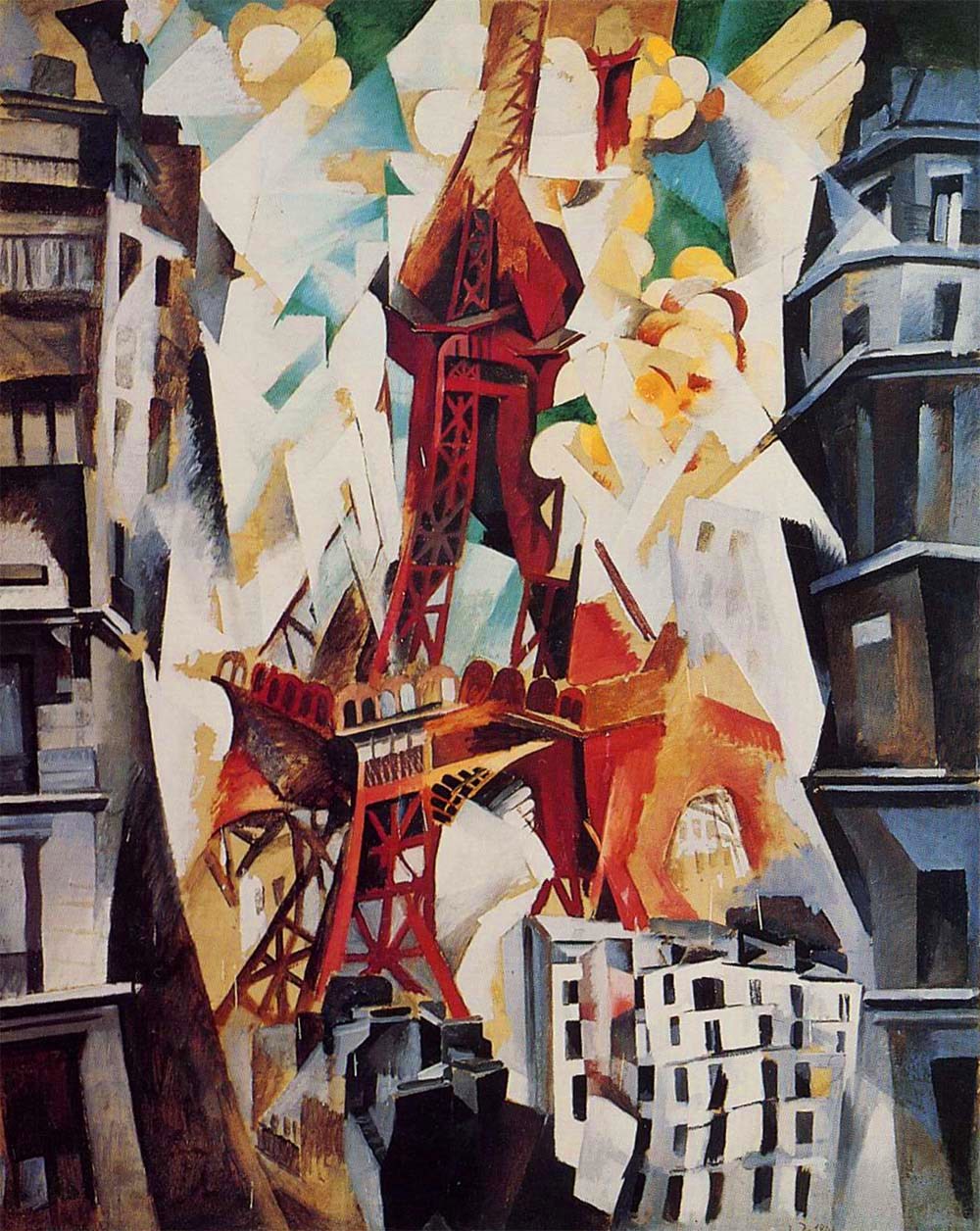|
The Tree (Gleizes)
''The Tree'' (French: ''L'Arbre''), is a painting created in 1910 by the French artist Albert Gleizes. Executed in an advanced Proto-Cubist style, the work was exhibited in Paris at the Salon des Indépendants, 1910 (no. 2160), the following year Gleizes chose to exhibit it at the Salon de la Section d'Or, Galerie La Boétie, 1912 (no. 34), and Manes Moderni Umeni, S.V.U., Vystava, Prague, 1914 (no. 33). The painting was again shown at the Grand Palais, Salon des Indépendants, ''Trente ans d'art indépendant'', in 1926. ''L'Arbre'', an important work of 1910, appeared at the decisive Salon des Indépendants of 1911, where Cubism emerged as a group manifestation and spread across the globe, at times shocking the general public. Description ''The Tree'' is an oil painting on canvas with dimensions 92 by 73.2 cm ( by inches), signed and dated ''Albert Gleizes 10'', lower right. Gleizes practically subjugates The Tree in the foreground—its thin trunk slightly off-center and foli ... [...More Info...] [...Related Items...] OR: [Wikipedia] [Google] [Baidu] |
Albert Gleizes
Albert Gleizes (; 8 December 1881 – 23 June 1953) was a French artist, theoretician, philosopher, a self-proclaimed founder of Cubism and an influence on the School of Paris. Albert Gleizes and Jean Metzinger wrote the first major treatise on Cubism, ''Du "Cubisme"'', 1912. Gleizes was a founding member of the Section d'Or group of artists. He was also a member of ''Der Sturm'', and his many theoretical writings were originally most appreciated in Germany, where especially at the Bauhaus his ideas were given thoughtful consideration. Gleizes spent four crucial years in New York, and played an important role in making America aware of modern art. He was a member of the Society of Independent Artists, founder of the Ernest-Renan Association, and both a founder and participant in the Abbaye de Créteil. Gleizes exhibited regularly at Léonce Rosenberg's ''Galerie de l’Effort Moderne'' in Paris; he was also a founder, organizer and director of Abstraction-Création. From the mid-1 ... [...More Info...] [...Related Items...] OR: [Wikipedia] [Google] [Baidu] |
Robert Delaunay
Robert Delaunay (; 12 April 1885 – 25 October 1941) was a French artist of the School of Paris movement; who, with his wife Sonia Delaunay and others, co-founded the Orphism (art), Orphism art movement, noted for its use of strong colours and geometric shapes. His later works were more abstract art, abstract. His key influence related to the bold use of colour and a clear love of experimentation with both depth and Lightness (color), tone. Overview From 1912 to 1914, Delaunay's nonfigurative paintings focused on color. His early paintings were deeply rooted in Neoimpressionism which he abandoned later. His writings on color, which were influenced by scientists and theoreticians, were largely intuitive and could sometimes be random statements based on the belief that color was a thing in itself, with its own powers of expression and form. He believed that painting was a purely visual art that depended on intellectual elements, and perception was in the impact of colored light on ... [...More Info...] [...Related Items...] OR: [Wikipedia] [Google] [Baidu] |
1910 Paintings
Year 191 ( CXCI) was a common year starting on Friday of the Julian calendar. At the time, it was known as the Year of the Consulship of Apronianus and Bradua (or, less frequently, year 944 ''Ab urbe condita''). The denomination 191 for this year has been used since the early medieval period, when the Anno Domini calendar era became the prevalent method in Europe for naming years. Events By place Parthia * King Vologases IV of Parthia dies after a 44-year reign, and is succeeded by his son Vologases V. China * A coalition of Chinese warlords from the east of Hangu Pass launches a punitive campaign against the warlord Dong Zhuo, who seized control of the central government in 189, and held the figurehead Emperor Xian hostage. After suffering some defeats against the coalition forces, Dong Zhuo forcefully relocates the imperial capital from Luoyang to Chang'an. Before leaving, Dong Zhuo orders his troops to loot the tombs of the Han emperors, and then destroy Luoyan ... [...More Info...] [...Related Items...] OR: [Wikipedia] [Google] [Baidu] |
Paintings By Albert Gleizes
Painting is a Visual arts, visual art, which is characterized by the practice of applying paint, pigment, color or other medium to a solid surface (called "matrix" or "Support (art), support"). The medium is commonly applied to the base with a brush. Other implements, such as palette knives, sponges, airbrushes, the artist's fingers, or even a dripping technique that uses gravity may be used. One who produces paintings is called a painter. In art, the term "painting" describes both the act and the result of the action (the final work is called "a painting"). The support for paintings includes such surfaces as walls, paper, canvas, wood, glass, lacquer, pottery, leaf, copper and concrete, and the painting may incorporate other materials, in single or multiple form, including sand, clay, paper, cardboard, newspaper, plaster, gold leaf, and even entire objects. Painting is an important form of visual arts, visual art, bringing in elements such as drawing, Composition (visual art ... [...More Info...] [...Related Items...] OR: [Wikipedia] [Google] [Baidu] |
List Of Works By Albert Gleizes
This is a list of works by the French artist, theoretician, philosopher Albert Gleizes; one of the founders of Cubism and an influence on the School of Paris. The artistic career of Gleizes spanned more than fifty years, from roughly 1901 to the year of his death in 1953. He was both a prolific painter and writer. This incomplete list is a selection of some of Gleizes' better-known oil paintings, or includes those for which images are available. Also listed is an extensive selection of his writings; both books and articles. "Gleizes' individual development, his unique struggle to reconcile forces," writes the art historian Daniel Robbins (art historian), Daniel Robbins, "made him one of the few painters to come out of Cubism with a wholly individual style, undeflected by later artistic movements. Although he occasionally returned to earlier subjects... these later works were treated anew, on the basis of fresh insights. He never repeated his earlier styles, never remained statio ... [...More Info...] [...Related Items...] OR: [Wikipedia] [Google] [Baidu] |
Du "Cubisme"
''Du "Cubisme"'', also written ''Du Cubisme'', or ''Du « Cubisme »'' (and in English, ''On Cubism'' or ''Cubism''), is a book written in 1912 by Albert Gleizes and Jean Metzinger. This was the first major text on Cubism, predating ''The Cubist Painters, Aesthetic Meditations, Les Peintres Cubistes'' by Guillaume Apollinaire (1913). The book is illustrated with black and white photographs of works by Paul Cézanne (1), Gleizes (5), Metzinger (5), Fernand Léger (5), Juan Gris (1), Francis Picabia (2), Marcel Duchamp (2), Pablo Picasso (1), Georges Braque (1), André Derain (1), and Marie Laurencin (2). The highly influential treatise was published by :fr:Eugène Figuière, Eugène Figuière Éditeurs, Collection "Tous les Arts", in Paris in 1912. Prior to publication the book was announced in the ''Revue d'Europe et d'Amérique'', March 1912; for the occasion of the Salon de Indépendants during the spring of 1912 in the ''Gazette des beaux-arts''; and in ''Paris-Journal'', Octob ... [...More Info...] [...Related Items...] OR: [Wikipedia] [Google] [Baidu] |


